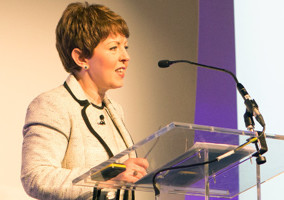The Charity Commission’s latest trust research makes for uncomfortable reading. The level of public trust is at the lowest point since the regulator starting tracking it in 2005; having seen a significant drop two years ago, the level dropped slightly again to 5.5.
This isn’t that surprising. The regulator has itself been teasing these findings for the past few weeks by saying that charities are less trusted than “the man on the street”.
I won’t go into my objections to randomly ranking trust in charities against other things as I’ve had that rant before (see Why I trust hairdressers more than charities).
We should note that the timing of the research could have played a part in the low score this year. Research was conducted just two weeks after the Oxfam scandal hit, in the same way that research in 2016 took place in the wake of the Kids Company and fundraising scandals.
This means it is impossible to say with any certainty whether trust has remained low since 2016 and just not recovered, or it if did and was then knocked back again because of the revalations about Oxfam.
As Vicky Browning of Acevo says “trust is not a static concept, and levels of trust vary across different communities and demographics”.
It is this variation which means some people in the charity sector may wish to dismiss the Commission’s figures – they probably don’t chime with their experience of interacting with donors or beneficiaries.
Narrative matters
It isn’t just the low figure that is problematic for charities, but also the negative picture painted by the Commission’s commentary.
You could use this research to argue that charities are vastly more trusted than many other institutions and that the decline is down to a wider decline in trust in institutions and not necessarily something particular to the charity sector. But the Charity Commission didn't.
The regulator’s interpretation of the findings are that trust levels are lower than the sector would like because charities have behaved badly. The public’s reaction is therefore reasonable and the solution is for charities to change their ways, not just improve their communication.
Importantly the regulator is insistent that improving public trust is imperative. Again this isn’t very surprising – Baroness Stowell said this was her intention when she was grilled by MPs about her vision for the sector.
This understandably hits a nerve for a lot of people who work in charities – no-one likes to be told that no-one trusts you, and there’s been a certain level of disquiet at times about the tone the regulator is taking.
I actually think the Commission has a point here, even if it is being made quite clumsily at times. In the foreword to yesterday’s report it expresses itself better.
“Charities have a special status in society, which comes with certain privileges (financial and reputational) and advantages (public support),” it said. “With these advantages come obligations to act to a high standard of compliant and ethical behaviour that the public expects.”
Again and again we see charities finding themselves on the receiving end of some negative media coverage, not because they have done anything wrong, but because people expect charities to go above and beyond and this doesn't always tally with the reality of running large charities.
It is a good thing that the public has high standards for charities though, and charities would be wise to heed the Commission’s warnings and look at ways they could demonstrate they are living their values. Too often we see cases where the focus on the cause is so intense that it leaves little room for ensuring the charity is properly run, staff are supported, volunteers are valued and fundraising is carried out ethically.
Some work has already begun on this, although it was too late to have been captured in this research. For example NCVO has published a draft code of ethics, while Acevo and the Institute of Fundraising are urging leaders to take action to improve diversity.
One note of caution here. Too many different, but similar, codes, principles or standards risks confusing the public. The sector must co-ordinate its efforts to avoid overlap.
People love pies
One of the most interesting parts of the research, which risks being overlooked, is a controlled experiment, splitting its sample into four groups and looking at how messaging affects trust and propensity to donate for a fictional charity.
The findings are really interesting.
When the fictional charity used a fundraising statement with the wording “We need your donation to keep caring for people in your community” 38 per cent gave it a trust score of between 7 and 10 and 25 per cent were likely to donate.
When it displayed the regulator’s watermark 49 per cent said that they would trust it but still just 25 per cent were likely to donate.
Using an impact statement, with the wording “We gave chronically and terminally ill patients the care they need. Last year our nurses and care workers helped 712 patients at home and 346 patients in our care wards”, increased trust to 53 per cent and 28 per cent said they were likely to donate.
But by far the most trusted message was using a pie chart to show where money goes. Trust rose to 62 per cent and 38 per cent said they were likely to donate.
This certainly poses some awkward questions. Ever since the Oxfam safeguarding scandal I’ve been wondering if some charities had made a rod of their own back by using pie charts such as this to show where the money goes, because it inadvertently boxes themselves into a corner about how much they spend on admin costs.
It would be great if someone could do more research here. Does the relative sizes of each slice of the pie have an impact on trust/likelihood to donate? How granular should it be – does each programme need its own slice?
In the Commission’s example 10 per cent was spent on fundraising and marketing, 15 per cent was spent on administration and wages and 75 per cent was spent on patient support and care. I like how they avoided drawing a thick distinguishing line between ‘admin’ and ‘the cause’ by explaining what these involved.
It certainly chimes with other research by the consultancy nfpSynergy, which found that the public assume charities are more inefficient than they actually are. It found that the largest charities spend around 86 per cent on ‘the cause’ and 14 per cent on other costs, while the public assumes that the average charity spends 33 per cent on admin and 25 per cent on fundraising.
Essentially this is another reminder that it is high time for a serious, nuanced debate about what core costs are and how charities communicate them.
Aspirational
The Commission’s report says it has the “aspiration that charities are among the most trusted social institutions” – this is pretty difficult to argue with.
Now is not the time for too much introspection about levels of trust. The findings of this research are important and should feed through into changing behaviours and actions.
But there is no need to spend the next two years publicly worrying about trust being at an all-time low and arguing about who should be in charge of the sector wide improve public trust campaign.
Instead get on with being trustworthy by doing the right thing across all aspects of your work and making sure that this visible and clear to the public.
|
Related articles












